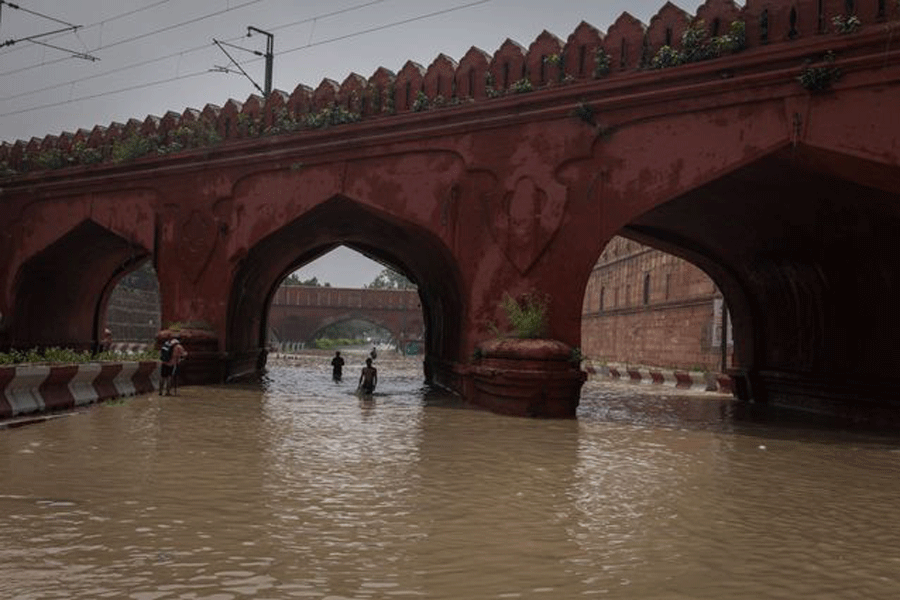The Yamuna river in Delhi, at its record spate, returned to the walls of the Red Fort.
The 375-year-old fort was built on the banks of the Yamuna river whose water fed its moats. Much water has flowed down the Yamuna since then and its width reduced as several other human-made structures appeared on what was once in floodplains. On Thursday, its water breached its bunds and engulfed the Ring Road till it reached the northern walls of the fort. The water also reached the posh Civil Lines neighbourhood and the income tax office area in the heart of the capital.
The Central Water Commission categorised the hydrological event here as an “extreme flood situation” after the Yamuna rose above its highest recorded level of 207.49 metres at Delhi’s Old Railway Bridge on Wednesday afternoon. The level at 7pm on Thursday was 208.66 metres with a forecast of it gradually reducing from Thursday night.
Educational institutions and non-essential government offices in Delhi have been shut until next week and several schools will be turned into relief camps for thousands who inhabited the floodplains.
Every year, during monsoon, the floodplain residents and farmers move their belongings and livestock to open spaces at an elevation near the banks. But this time, the reach of the river is far greater and it's increasing with the heavy flow of rain water from Uttarakhand and Himachal Pradesh through Haryana.
Delhi chief minister Arvind Kejriwal said that around 20,000 people have moved into the camps and asked residents to reduce their use of water for the next two days. He explained: "We had never imagined that the Yamuna's water level would go this high. Because of this, three of our water treatment plants in Wazirabad, Chandrawal and Okhla have been shut down. The rise in water level has led to the machines of the water treatment plants getting submerged in the water as well. Now we need the water level to decrease and then the machines need to be dried out, as the machines run on electricity and there is a fear of someone getting electrocuted. Only once that is done, we can run the water treatment plants again.”
He added: “Because of the shutdown of these three water treatment plants, the production of water in Delhi will reduce by 25 per cent. Besides this, earlier we also had several tube wells running in the plains along the river, but those have also been shut down. So, because of all these there is a possibility that there could be some problems in the supply of water in parts of Delhi over the next one to two days.”
The Yamuna Bank Metro station was shut on Thursday, although trains passed through it, as its entrance was flooded. Metro trains are running at reduced speed on the four bridges across the Yamuna whose waters are inching towards the rails.
Heavy vehicles with non essential goods are being stopped at Delhi’s boundaries to reduce traffic congestion because of diversions necessitated by the flood. Buses to the terminus at Kashmere Gate are being stopped on the boundary with Haryana at Singhu from where the Delhi Transport Corporation buses would ferry travellers. The terminus at Kashmere Gate has also been flooded and businesses in the area have been ordered to close until the water recedes.











